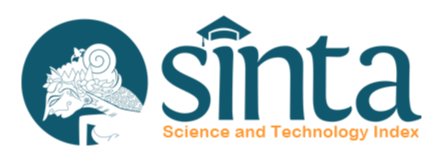The Relation Between Physical Activities and the Occurrence of Dysmenorrhea
DOI:
https://doi.org/10.12928/dpphj.v14i2.2480Keywords:
physical activities, dysmenorrhea, adolescentsAbstract
Background: According to a research conducted in Palestine, there are 85.1% university students reportedly having pain during menstruation. The occurrence of dysmenorrhea in Indonesia is 86%. The high occurrence of dysmenorrhea has less attention from the public and even from the adolescents themselves. One of the factors that influence the occurrence of dysmenorrhea is physical activities. Women who do not do exercise regularly have 3.48 times of risk to experience dysmenorrhea. This study aims to reveal the correlation between physical activities and dysmenorrhea. Method: This was quantitative research with cross sectional design. The population in this study was 136 female students of D4 Medical Laboratory Technology study program. Sixty eight respondents were contributed in this study with exclusion and inclusion criteria. The sampling technique used was total sampling. Bivariate analysis used was the Fisher’s Exact correlation test. The research hypothesis was there was a correlation between physical activities and the occurrence of dysmenorrhea. Results: There were 51 respondents who experienced dysmenorrhea (75%) and there were 53 respondents who were categorized at moderate physical activities obtained p < 0.05). Conclusion:  It can be concluded that there is a relation between physical activities and dysmenorrhea
References
2. Salsabilla Alifah Putri SA, Yunus M, Fanani E. Hubungan Antara Nyeri Haid (Dismenore) Terhadap Aktivitas Belajar pada Siswi Kelas Xi Sma Negeri 52 Jakarta. The Indonesian Journal of Public Health. 2017;2(2):85-92.
3. Wulandari W, Santi E,Damayanti EAF. Hubungan Antara Tingkat Stres Akademik dengan Kejadian Dismenore Primer Pada Remaja Putri di SMP Darul Hijrah Putri Martapura. Nerspedia. 2018;1(2):123-129.
4. Wati LR, Arifiandi MD, Prastiwi F. Hubungan Aktivitas Fisik dengan Derajat Dysmenorrhea Primer Pada Remaja. Journal of Issues in Midwifery. 2017;1(2):1-18.
5. Zurhayati, Ashar T, Tarigan L. Faktor Predisposing, Enabling, Reinforcing terhadap Kualitas Pengendalian Nyeri pada Remaja mengalami Dismenorea. Jurnal Endurance. 2018;3(2):284-291.
6. Oktavianto E, Kurniati FD, Badi’ah A, Bengu MA, Nyeri dan Kecemasan Berhubungan dengan Kualitas Hidup Remaja Dismenore. Health Science and Pharmacy Journal. 2018:2(1):22-29.
7. Sabilla M, Febrianti T, Efendi R. Analisis Perilaku dan Kebutuhan Informasi Kesehatan Reproduksi Melalui Pusat Informasi Konseling Remaja. Jurnal Kesehatan Indra Husada. 2019;7(1):1-10.
8. Welis W, Rifki MS. Gizi untuk Aktifitas Fisik dan Kebugaran. Padang: Sukabina Press; 2013
9. Lestari DR, Citrawati M, Hardini N. Hubungan Aktivitas Fisik dan Kualitas Tidur Dengan Dismenorea Pada Mahasiswi FK UPN “Veteran†Jakarta. Majalah Kedokteran Andalas. 2018;41(2):48-58.
10. Herdianti KA, Wardana NG, Karmaya INM. Hubungan Antara Kebiasaan Olahraga dengan Dismenore Primer Pada Mahasiswi Pre-Klinik Program Studi Pendidikan Dokter Fakultas Kedokteran Universitas Udayana tahun ajaran 2017. Bali Anatomy Journal (BAJ). 2019;2(1):25-29.
11. Sinaga E, Saribanon N, Sa’adah SN, dkk. Manajemen Kesehatan Menstruasi. Jakarta: Universitas Nasional ;IWWASH;Global One. 2017.
12. Ammar UR. Faktor Risiko Dismenore Primer pada Wanita Usia Subur di Kelurahan Ploso Kecamatan Tambaksari Surabaya. Jurnal Berkala Epidemiolog. 2016;4(1):37–49.
13. Juliana I, Rompas S, Onibala F. Hubungan Dismenore Dengan Gangguan Siklus Haid pada Remaja Di SMA N 1 Manado. Journal Keperawatan. 2019;7(1):1-8.
14. Nurhuda SS, Fathurrahman. Asupan Kalsium dan Magnesium serta Akfititas Fisik Berhubungan dengan Dismenore pada Remaja. Jurnal Riset Pangan dan Gizi. 2019;2(1):12-22.
15. Anindita P, Darwin E, Afriwardi. Hubungan Aktivitas Fisik Harian dengan Gangguan Menstruasi pada Mahasiswa Fakultas Kedokteran Universitas Andalas. Jurnal Kesehatan Andalas. 2016;5(3):522-527.
16. Wulandari A,Hasanah O, Woferst R. Gambaran Kejadian dan Manajemen Dismenore Pada Remaja Putri Di Kecamatan Lima Puluh Kota Pekanbaru. Jurnal Online Mahasiswa FKp. 2018;5(2):468-476.
17. Beddu PS, Mukarramah S, Lestahulu V. Hubungan Status Gizi dan Usia Menarche dengan Dismenore Primer pada Remaja. The Southeast Asian Journal of Midwifery. 2015;1(1):16-21.
18. Wati LR, Arifiandi MD, Prastiwi F. Hubungan Aktifitas Fisik dengan Derajat Dysmenorrhea Primer pada Remaja. Journal of Issues in Midwifery. 2017;1(2):1-18.
19. Anisa MV. The Effect Of Exerciseson Primary Dysmenorrhea. Jurnal Majority. 2015;4(2):60-65.
20. Mulyati S, Sasnitiari NN. Pengaruh Pola Aktifitas Fisik dan Status Gizi Terhadap Kejadian Dismenore Pada Remaja Putri. Jurnal Riset Kesehatan Poltekkes Depkes Bandung. 2019;11(1):318-325.
Downloads
Published
Issue
Section
License
Authors transfer the copyright and grant the Disease Prevention and Public Health Journal right of first publication with the work simultaneously licensed under a Creative Commons Attribution License (CC BY-SA 4.0) that allows others to share (copy and redistribute the material in any medium or format) and adapt (remix, transform, and build upon the material) the work for any purpose, even commercially with an acknowledgement of the work's authorship and initial publication in Disease Prevention and Public Health Journal. Authors are able to enter into separate, additional contractual arrangements for the non-exclusive distribution of the journal's published version of the work (e.g., post it to an institutional repository or publish it in a book), with an acknowledgement of its initial publication in Disease Prevention and Public Health Journal. Authors are permitted and encouraged to post their work online (e.g., in institutional repositories or on their website) prior to and during the submission process, as it can lead to productive exchanges, as well as earlier and greater citation of published work (See The Effect of Open Access).

This work is licensed under a Creative Commons Attribution-ShareAlike 4.0 International License.







